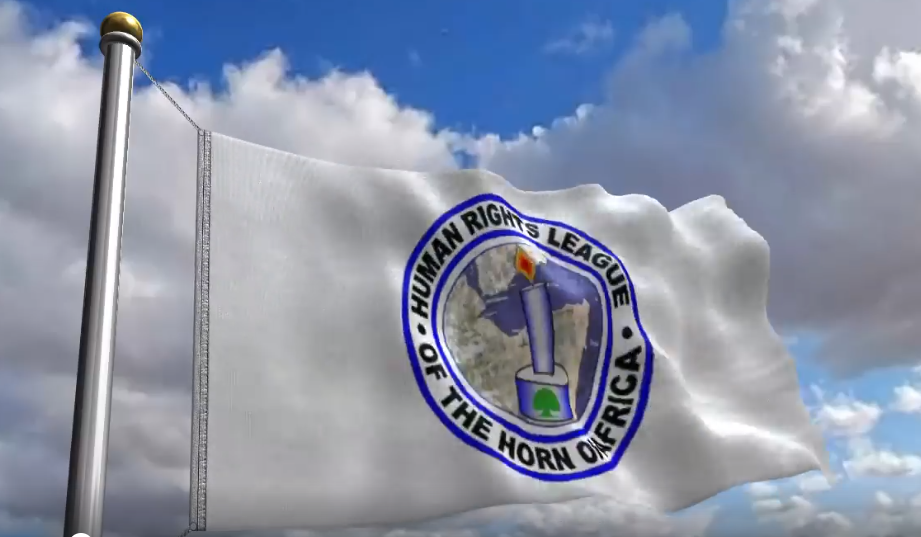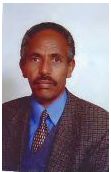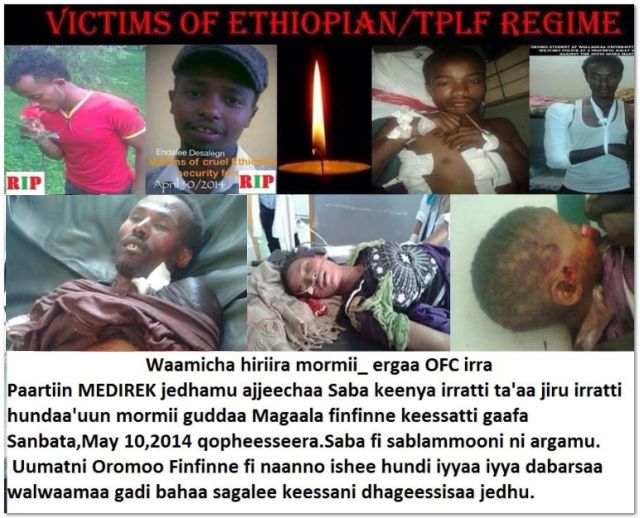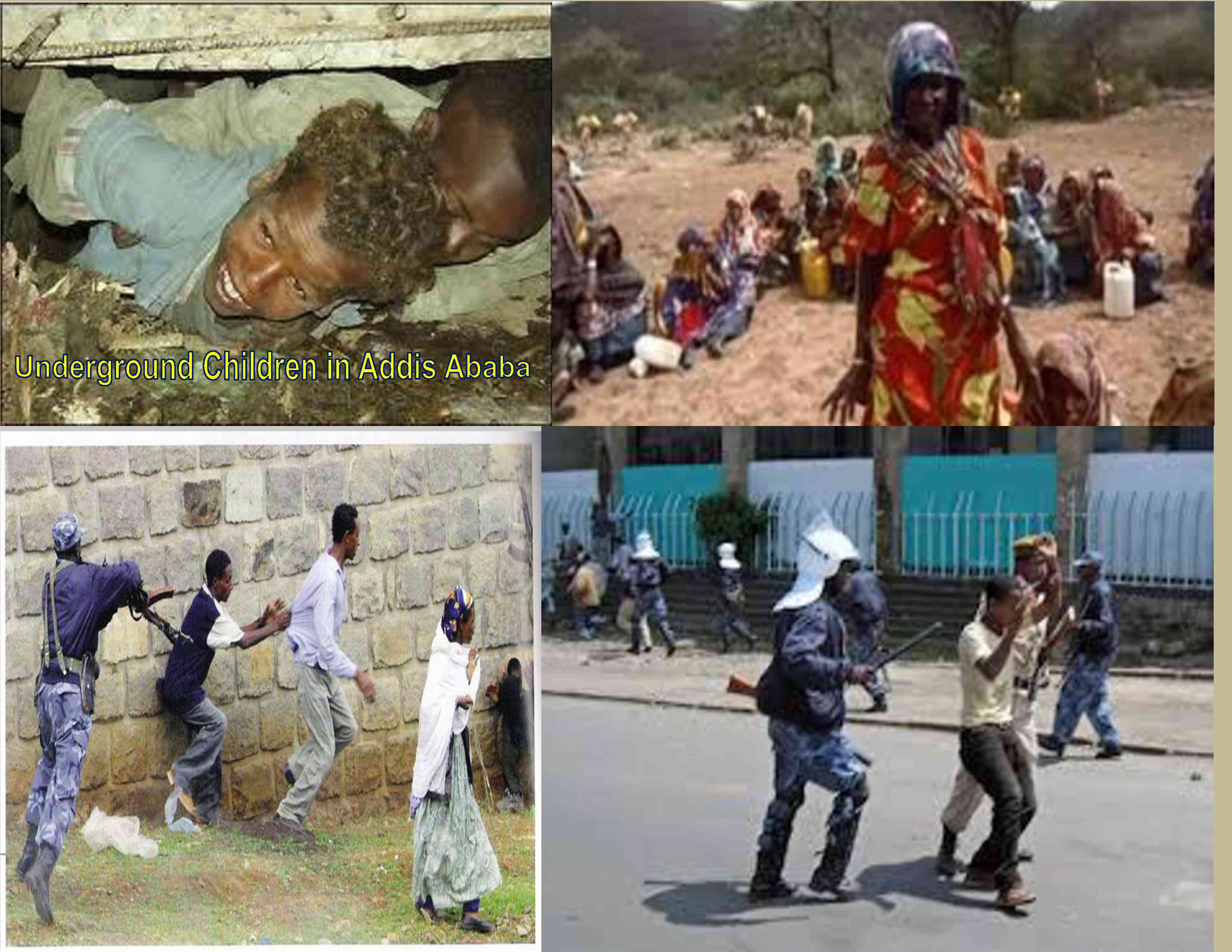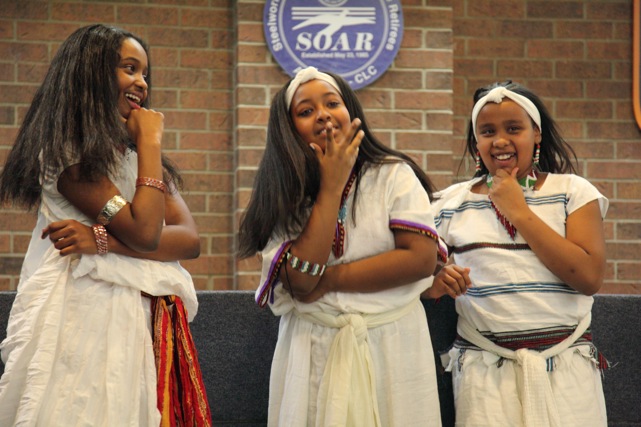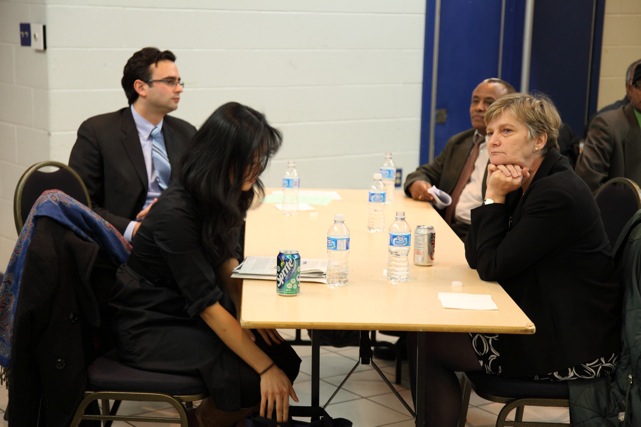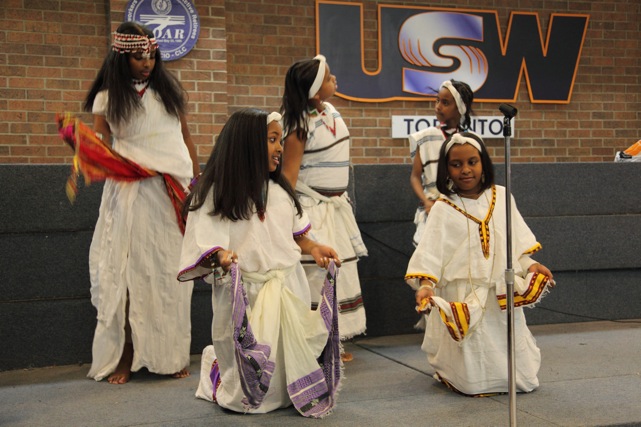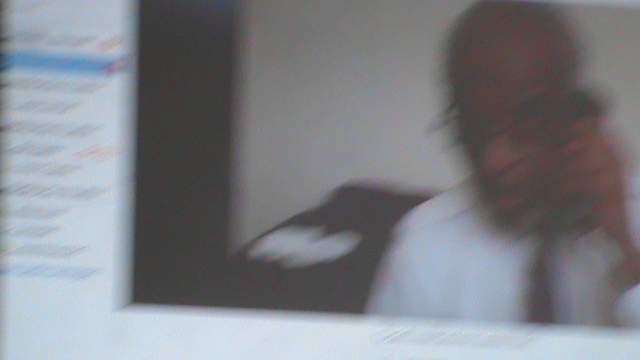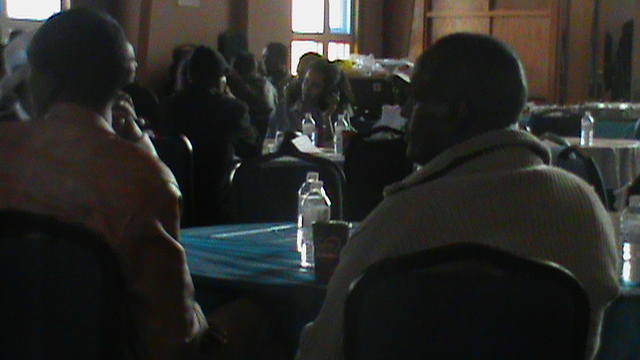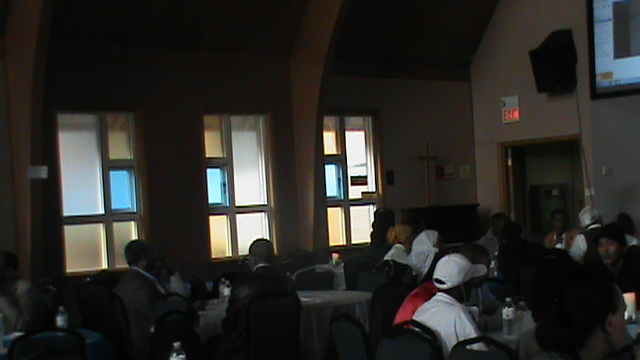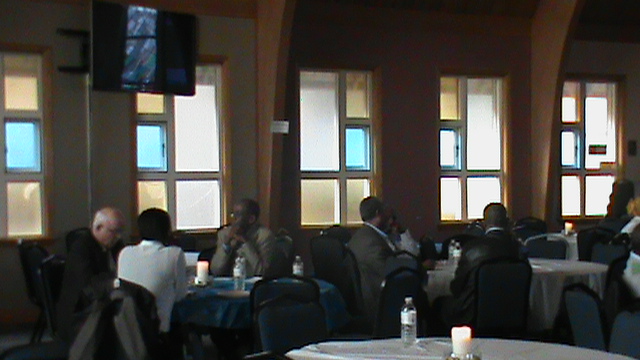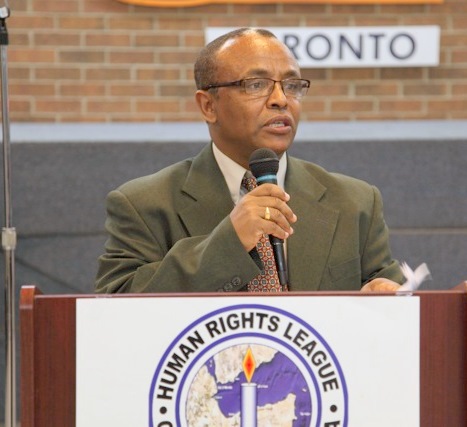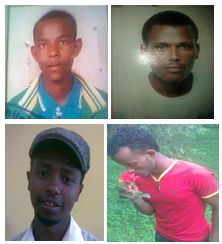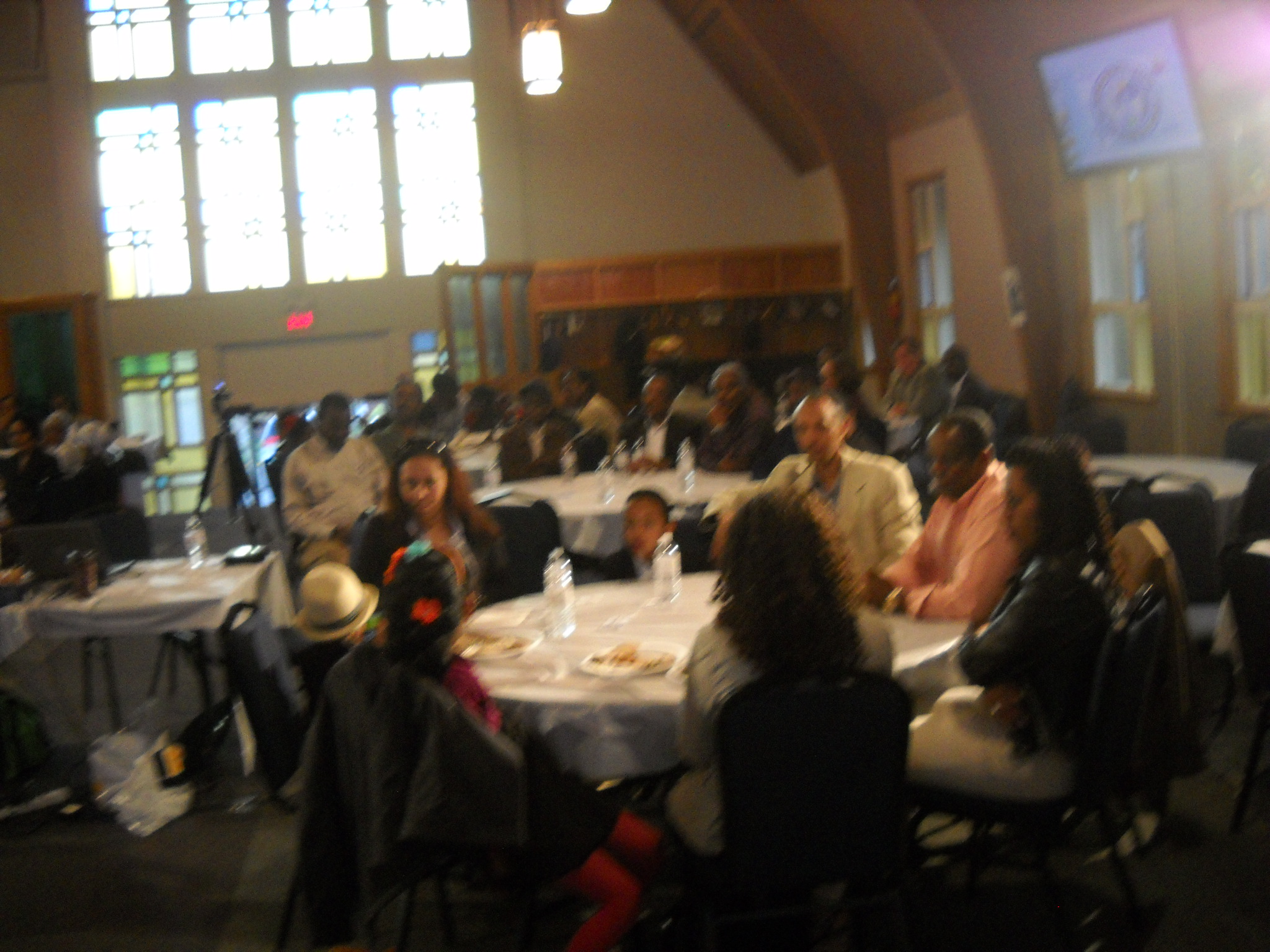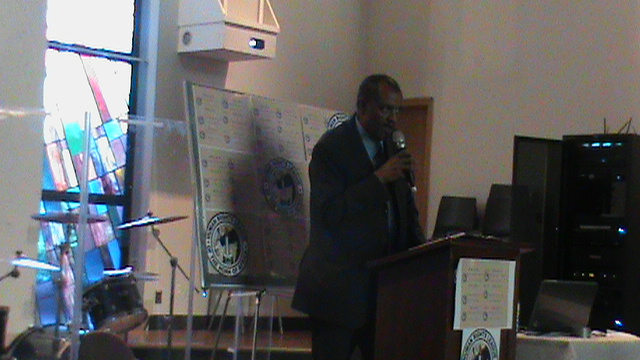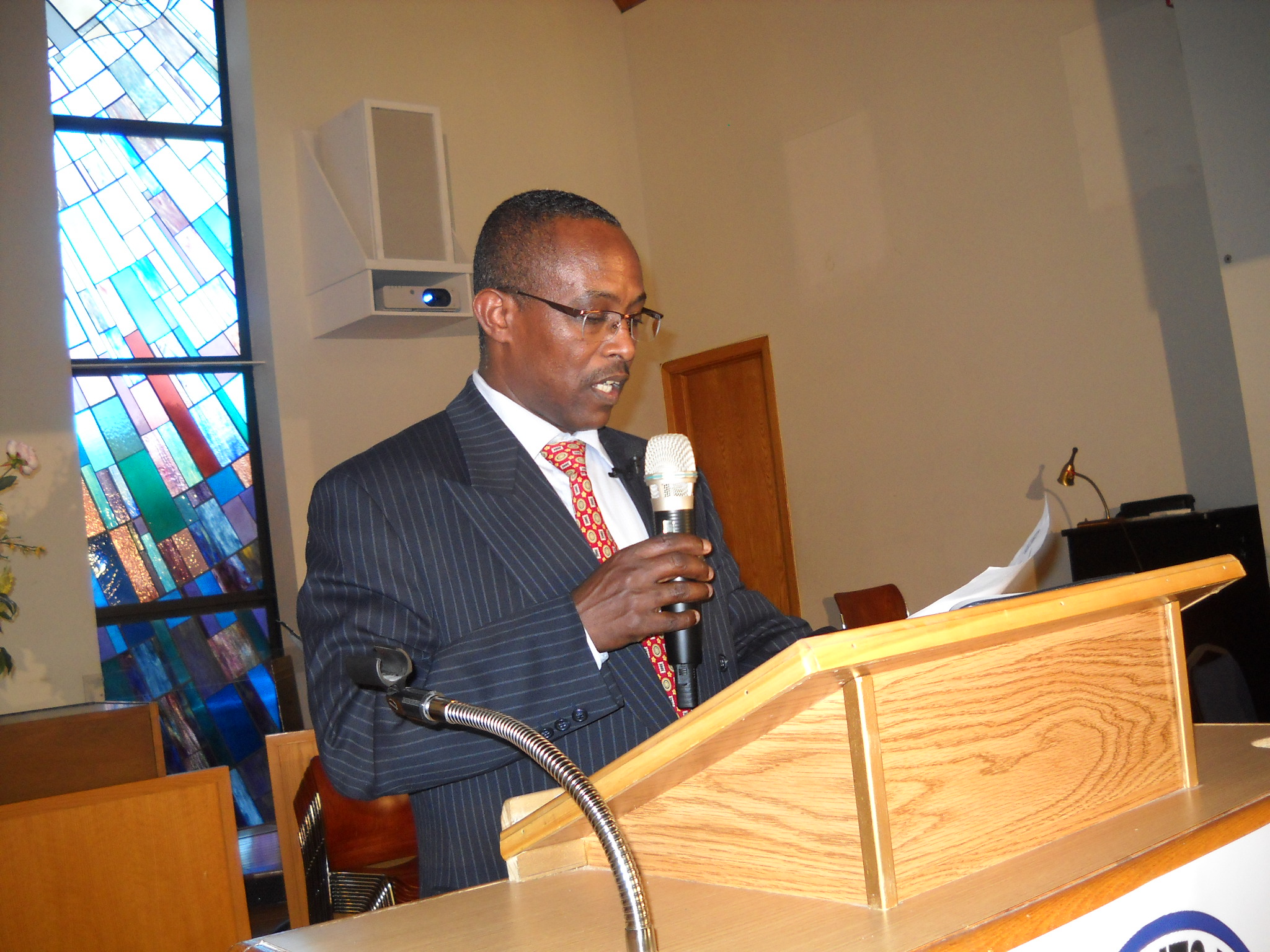 Prisoner of Conscience under the Ethiopian regime of Meles Zenawi
Prisoner of Conscience under the Ethiopian regime of Meles ZenawiThe following is a first-hand account of the plight of Oromo political prisoners under the Ethiopian regime of Meles Zenawi as told by Mr. Bekele Jirata, who was the Secretary General of the Oromo Federalist Democratic Movement (OFDM), a prominent opposition political organization, when he was jailed by Ethiopian security forces in late 2008. Mr. Bekele Jirata is an agricultural expert with a Master’s degree and was previously employed by the Oromia Water Resources Bureau.
Note: Some parts describe graphic torture methods; reader discretion is advised.
![]()
FROM MAIKELAWI TO KALITI
THE TORTURE-PRISON SYSTEM
Maikelawi is the Amharic name for the Federal Police Crime Investigation and Forensic Department (FPCFD); and Kaliti is the main prison located on the eastern outskirts of Finfinne (Addis Ababa) in Hakaki Kaliti Woreda (county).
Maikelawi is the well-known detention and torturing center in the country. It used to also be calledSostenga Police Tabiya (the Third Police Station) during Mengistu’s military regime. This is the place where Oromo sons and daughters experience the most atrocities committed by the EPRDF federal police, security services and anti-terrorism task force. This was the place where innocent Oromos, including myself, were detained, beaten, intimidated and dehumanized in 2008. This is not new to Oromos, but I am talking about what I had witnessed.
Kaliti is one of the biggest prison centers where thousands of Ethiopian citizens, 90% of whom are Oromos, are suffering. I was lucky to be released on bail and to be able to escape the long term imprisonment passed on me on March 31, 2010. But, others, who were detained or sentenced on the same day, are now facing death, life imprisonment (Mesfin Abebe and Tesfahun Chemeda, respectively), and long-term imprisonments.
This report covers only what I had witnessed during the one and half months of my detention in Maikelawi, and two months in the Kaliti prison.
THE MASSIVE ARRESTS OF OCTOBER/NOVEMBER 2008
The massive arrests of Oromos, which the EPRDF called ‘the crackdown’, was conducted from early in the morning to the evening of October 30, 2008. The arrests were without court warrants. Hundreds of heavily-armed federal police and anti-terrorist task force personnel were deployed for the mission in every corner of Addis Ababa city. It was a terror day for Addis Ababa city dwellers – a terror carried out by the government forces. The EPRDF terrorist group terrorized and arrested the following Oromo nationals. These are those arrested whose names I remember.
1. Eshetu Kitil … the owner of Hawi Hotel, arrested from his hotel office.
2. Kebede Borena … the Deputy General Manager of Hilton Hotel, arrested from his home.
3. Degen Borena … Kebede Borena’s brother and a businessman, arrested when he went to his brother’s house after hearing his brother had been arrested.
4. Colonel Olani Jebesa … a retired military officer, arrested from his house.
5. Wabe Haji … a legal adviser at the Commercial Bank of Ethiopia, arrested from his office.
6. Degene Daba … the owner of a trucking business, arrested from his house.
7. Roba Gedefa … an employee at the Niyala Insurancy Company, arrested from his office.
8. Aberash Yadeta … an employee at the Oda Share Company, arrested from her office.
9. Lelise Wodajo … an employee at the Ethiopian Television (ETV), arrested from her office.
10. Hailu Delesa … a third-year Haromaya University student majoring in accounting, arrested from the university campus.
11. Bayisa Husen … a student at Ambo High School, arrested from his house.
12. Bekele Negeri … an owner of a small business, arrested from his house.
13. Bogale Mosisa … a shopkeeper, arrested in Paisa area.
14. Kabebo Faye … a retiree (70 years old) and a Board Member of the Mecha-Tulema Development and Welfare Association, arrested from his house; and he later died immediately after his release from Maikelawi.
15. Bekele Jirata … the Secretary General of OFDM, arrested while going to the office (OFDM office).
16. Husein Moga … a day laborer, arrested from his house.
17. Yasin Jarso … a day laborer, arrested from his house.
18. Zeynu Mohamad … a shopkeeper, arrested from his shop.
19. Zerihun Wodajo … a renown Oromo artist, arrested from his house; and he was released from Maikelawi after one and half months detention.
20. Asefa Tefera Dibaba … a well-known writer and a lecturer at Addis Ababa University; he was released from Maikelawi after one and half months of detention.
21. Emiru Gurmesa … who had been released from Kaliti prison after 4 years of imprisonment without trial, and he was arrested and detained again in Maikelawi; he died immediately after his release from Maikelawi.
22. Two women, whose names I have forgotten, were brought from Adama; they were released from Maikelawi after a month and half detention.
23. Another young woman, detained with her 2-year-old baby; and she was released from Maikelawi after a month and half detention.
24. Tolesa Wolde … a well-known lawyer, arrested in November 2008 from his private office.
25. Abera Degefa … a Board Member of the Mecha-Tulema Development and Welfare Association and a Law lecturer at Addis Ababa University, arrested in November 2008.
26. Tsehayi (whose surname I have forgotten) …. the owner of a pharmacy, arrested from his pharmacy; and, he was released from Maikelawi after two months.
There were many, whose names I do not remember, who were brought from different parts of the Oromia regional state and also from Amhara regional state’s Oromia zone, Kemise area. Three young Oromos, who were arrested in mid October from Kemise area, were first taken to the Afar regional state’s police station and tortured bitterly; with their hands tied, they were left naked to be bitten by mosquitoes for two weeks before they were brought to Maikelawi. Since then, no one knows their whereabouts.
THOSE ABDUCTED FROM OTHER COUNTRIES FOR TORTURE AND DEATH
Tesfahun Chemeda and Mesfin Abebe were abducted from Nairobi, Kenya, in 2007; and they were later detained in an unknown place for over two years without appearing in court until they were brought to Maikelawi and finally headed the charge list of the 16 Oromos of the March 31, 2010 decision.
Four Oromos, who were kidnapped in 2006 from Somaliland (Hargeisa), were also detained in Maikelawi for over two years; they were never taken to court. One of them was an old man of 60 years. No one knows what had happened and their whereabouts since then.
THE MAIKELAWI TORTURE PRISON
There are three different officially known detention houses in Maikelawi; one is Chelema Bet (the Dark Dungeon). There are also underground and unofficial detention places inside the Maikelawi compound.
The Dark Dungeon is constructed in a “U”-shaped design; and it has 9 cells. There is a very narrow corridor between the opposite cells. At the end of the corridor is found the toilet, which is never maintained, and dirty water overflows from it.
Above the cells are offices. This underground dark prison is built with black and heavy stones; and the floor is concrete; it is dark and extremely cold. There is light in the corridor which gives dim light to the cells through small aperture found above the wall left to let in air. Inside the cells, detainees can see each other hardly. In each cell of 4*4 meters, sometimes 12 (other times 16) people are jammed. No space to move, no light; you hear nothing, and you see nothing. The same cell is used for sleeping and for eating; a urine bucket is also there. The cell is poorly ventilated, and the unpleasant smell of the toilet disturbs. These conditions, added to the police humiliation, intimidation and torture, make it the worst of all in life. In these horrible situations, we had passed 46 days without seeing sunlight with the doors closed day and night.
In this Dark Dungeon, there is also a special cell, Cell Number 7, which has other cells inside – cells within a cell. The inner cells are extremely narrow; and prisoners can not sit nor sleep, and it is used as an additional torturing method. Degene Daba was thrown in this cell for a week with his hands tied.
During our stay in Maikelawi, we had never been visited by our family. I was visited by a lawyer only once. We were tortured physically and psychologically. Different torturing methods were applied on us.
• Beating with electric cables, especially on the head and fingers;
• Kicking groups of detainees with military shoes and standing on barefoot;
• Forcing to stand still barefoot with hands raised above the head for a prolonged time – up to 48 hours continuously – without sleep and rest, day and night;
• Depriving sleep and rest, night and day;
• Tying hands to the roof and beating;
• Forcing to do physical exercises continuously. When a detainee is unable to move, walking on one’s body with their military shoes, beating with shoes on the face and the head until one falls unconscious;
• Forcing to lie naked on wet concrete floor;
• Taking to the very dark room and terrorizing at gunpoint;
• Humiliating and degrading female detainees by making them stand naked surrounded by a group of policemen – injuring their human dignity.
These and other forms of torture, like mental torturing through insults which can never heal, were applied on us.
Degene Daba was among those who were bitterly beaten almost to death. He was urinating pure blood for a month while he was kept in chains. He was accused of transporting ammunition to the Oromo Liberation Front (OLF) fighters. The police took a picture of him with bullets taken from one of the offices in the Maikelawi compound, and that picture was used as an evidence.
Kebabo Faye, who was 70 years old, was denied medical treatment; he died immediately after he had been released from Maikelawi. He was ill-treated and mentally tortured by the police.
Emiru Gurmesa, who was arrested for the third time in 2008, had also died after being released from Maikelawi. I had known Emiru since 1983. He was sacked from the Oromia Coffee and Tea Development Bureau in 1997 and imprisoned for one year. Again, he was arrested and jailed in 2004; he was then released from Kaliti in 2007. For the third time, he was arrested on October 30, 2008. When he was brought to Maikelawi on October 30 around 6 o’clock, one policeman, standing in front of the office, said, “Oh! My God, this man is back again; I think this is his third or fourth time.”
EPRDF arrests and accuses peaceful and innocent Oromos with fabricated charges. That is why the charges are related to the occupations of the detained individuals.
Those, who have private businesses, are accused of providing financial supports to young Oromos fleeing the country; those, who travel abroad for their own private businesses, are accused of contacting OLF leaders; those, who have trucking businesses, are accused of transporting arms to OLF fighting forces; those, who are either government or private employees, are accused of providing financial supports to the OLF. Those, who are students, are accused of agitating and organizing fellow students against the government. Those, who are in opposition political parties, are accused of recruiting OLF cadres disguised as party members.
What we understand from this type of charges is EPRDF’s intention to terrorize and eliminate Oromo nationalists to continue its domination without any opposition. EPRDF never wants opposition to exist in the country – which had been clearly seen in 2010 elections.
Though the charges were about having relations with the OLF, the police interrogations and offers were about:
– “Why do you hate EPRDF?”
– “Why don’t you work with the government?”
– “Do you want to talk to government higher officials?”
– “Why do you oppose? You bring nothing if you oppose.”
– “If you denounce OLF, you will be released.” and so on.
The above clearly show that the charges were based on revenge.
THE KALITI CONCENTRATION CAMP
Kaliti is located on the eastern outskirts of the capital, Addis Ababa, at about 25km. The prison used to have 6 zones when we arrived, but it later became an 8-zone prison center because of the huge number of new prisoners. Each zone has about 3000 prisoners. The walls and roofs of the prison houses are made of corrugated iron sheets. Zone #3 has 5 prison houses numbered from 1 to 5.
In each of these prison houses, 600-800 prisoners are crowded. Let alone to sleep, there is no place to stand.
Prisoners are beaten and ill treated by self-appointed gangsters. They can punish and order the prisoner to do whatever they want. They are the ones who decide and force people to sleep where there is no place to sleep. They order others to pile human beings like sacks of wheat – one head down, the other head opposite, and the third one on top of the two.
If a prisoner gives money, they treat him better than those who do not have money. Corruption in the Kaliti prison is official – even up to the prison administration. There are corruption dealers who terrorize newcomers, saying, “unless you give money, the administration will send you to Ziway or Shoa Robit prisons,” which are very harsh to live, and are located far away from one’s family.
Because of the suffocation created by overcrowding, the lack of sanitation, the shortage of toilets and bathrooms, the lack of medical treatments, the lack of sleeping places, many prisoners suffer from TB (Tuberculosis) and other diseases, everybody through the prison coughs. Four prisoners had died of untreated diseases within a month when I was there. I remember a young man called Sisay, who was a TB patient; he was denied medical treatment and died in prison.
The prison compound is very small; it’s dusty during the dry time and muddy during the rainy season; it’s overcrowded and difficult to move around.
At Kaliti, radios and newspapers are not allowed; even books written in the English Language are not permitted. What is available in Kaliti is cigarette that many young prisoners “enjoy”.
Over 90% of the prisoners in Kaliti are youngsters, out of which 99% are young Oromos, aged between 18 and 35 years, accused of being either members or supporters of the OLF. The charges are fabricated; and the evidences are totally false. They are simply imprisoned because they have rejected to be members of OPDO/EPRDF or they have spoken out their mind.
Eighty percent of the young Oromos in the Kaliti prison are high school or university students. These young people are sentenced to long-year imprisonments. By the time they come out (if they escape death), they will be over-aged and could not continue school; they do not have plans about what to do next. Even they will not get place to live because the local OPDO/EPRDF cadres will never allow them to live in peace. As a result, many, who have been through similar conditions, flee the the country after their releases. They suffer or die in concentration camps of the neighboring countries: Kenya, Somaliland (Hargeisa), Djibouti, Yemen, Uganda, Tanzania, and so on.
Others, in violation of international laws, are abducted from those neighboring countries by the Ethiopian government’s security services in collaboration with the host country’s police; and they are thrown back to the same prison for more suffering and danger on their lives. Examples are Mesfin Abebe and Tesfahun Chemeda; Mesfin Abebe was sentenced to death, and Tesfahun Chemeda to life imprisonment on March 31, 2010.
THE (KANGAROO) COURT PROCESS
Among Those Targeted: Top (L to R) – Mr. Mesfin A. Abdissa, Mr. Tesfahun Chemeda. Bottom (L to R) – Mrs. Aberash Yadeta, Mrs. Lelisa Wodajo, Mr. Wabe Haji, Mr. Kebede Borena, and Mr. Bekele Jirata
All detainees of the October 30, 2008 case were taken to the nearby court after two days of arrest. The two Oromos (Mesfin Abebe and Tesfahun Chemeda), who were kidnapped from Kenya in 2007, also appeared in court for the first time on this day.
We appeared in this court six times during this ordeal. Our appeals for being tortured by the police and our requests for bail were rejected by the judge.
On December 15, 2008, we were taken to the Federal High Court’s Third Bench; we appealed for bail, but the court rejected. We were taken to the Kaliti prison.
On our third appearance, the court ordered the federal prosecutor to bring his witnesses to continue the trial.
The prosecutor listed a number of so-called witnesses. Most of them were brought in by the federal police from different parts of the Oromia regional state and stayed in Maikelawi for a week to be given orientation, with the help of detainees’ pictures, by security services on what to say in court. This was confirmed by the witnesses themselves.
In addition to that, the security police showed the prisoners to the witnesses at the gate of the court so that they could clearly identify before appearing in the court. Some of the witnesses were those who were imprisoned by the same charge and released on agreements made between the government and the prisoners. Others were unemployed young people paid by the federal security service.
The judiciary was under government pressure and direct interference. The prejudicial statement of the Minister of Communication, Bereket Simon, was a warning to the judiciary. The interference and pressure also resulted in changes of judges every now and then during the trial – causing the trial to be delayed for over two years.
CONCLUSION
EPRDF continuously denies prisoners are political prisoners. But, the massive arrests, and sentences to death and long-term imprisonments of hundreds of innocent Oromo nationals is purely political; it is nothing else.
As all knows, the killings, imprisonments and harassment of members of the Oromo People’s Congress (OPC) and OFDM, and other opposition party members on the eve and after May 23, 2010 elections had been political.
The acts of genocide the EPRDF government has carried out and still carries out on the Oromo people are not hidden from the international community, especially from the governments supporting this brutal government. Amnesty International (AI), the Human Rights Watch (HRW), the Oromia Support Group (OSG), the Human Rights League of the Horn of Africa (HRLHA), and other human rights organizations were and are still reporting the criminal acts committed by the Ethiopian antidemocratic government against peoples in Ethiopia in general, and the systematic elimination, especially, of the Oromo youth at the allegations of supporting the OLF.
But, the never-ending human rights violations, and the genocide the Ethiopian government has committed and is committing have not gotten due attention from the international community, particularly from governments supporting the Ethiopian government. The U.S. Department of State has expressed its concern several times about the human rights violations and the antidemocratic moves of the EPRDF government, but it has never taken serious actions more than words that actually encourage the dictatorial regime.
Finally, I appeal to all to use their leverages and say to EPRDF to stop chasing and killings Oromos and to release all political prisoners.
It is difficult for me to report the whole situation and reality of what has happened to each Oromo national in Maikelawi and in Kaliti, and the process of the federal court’s unfair trial. It does not even cover the entire inhuman acts the interrogators applied on me. It covers only the highlight. I will leave the rest for history.
Bekele Jirata
Former Secretary General, the Oromo Federalist Democratic Movement (OFDM)
